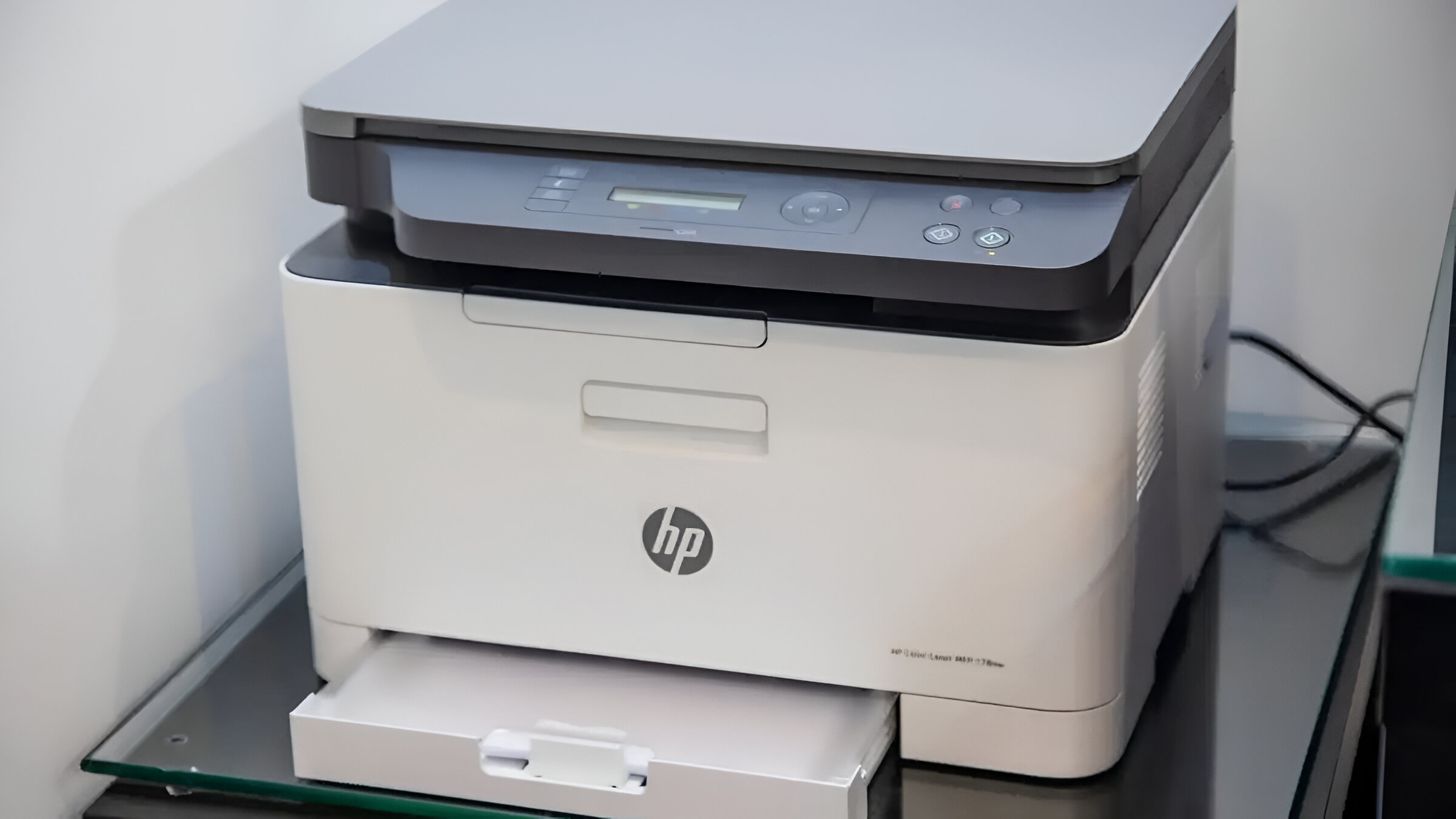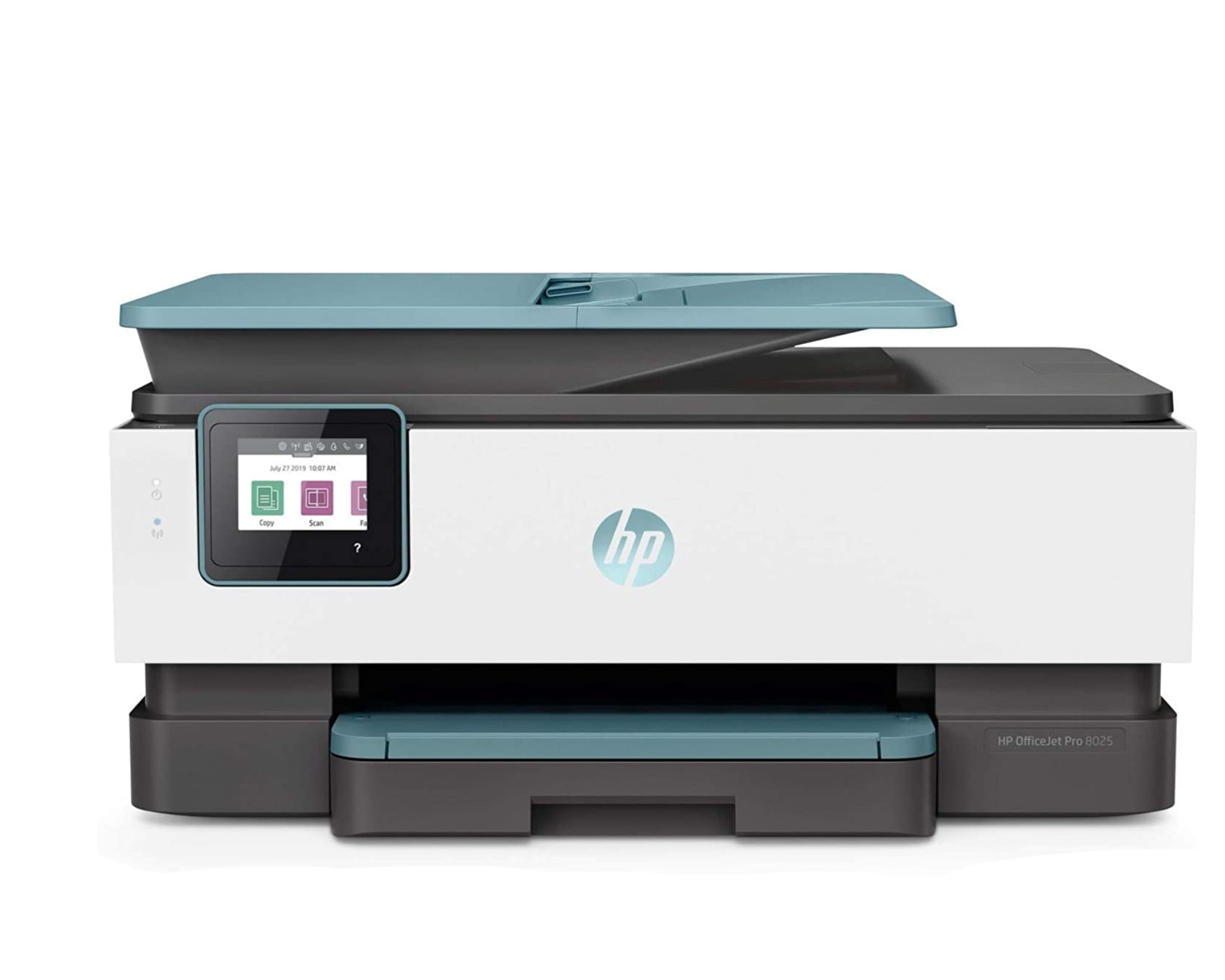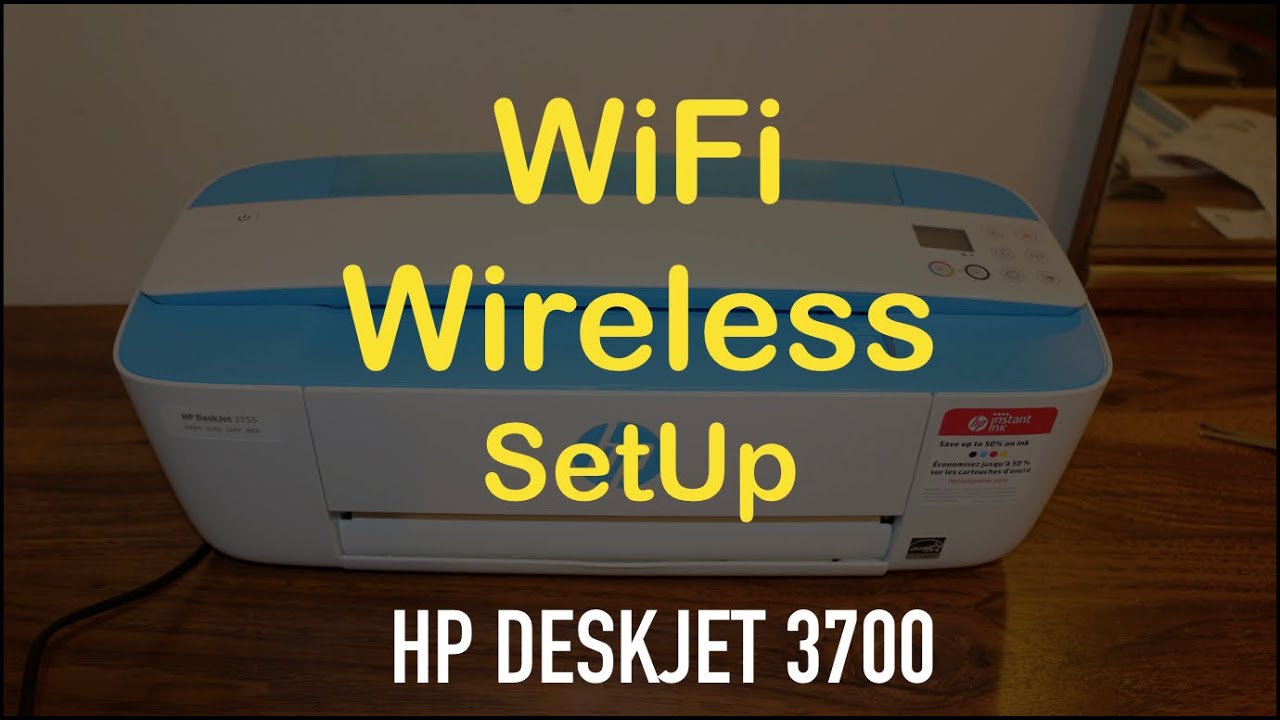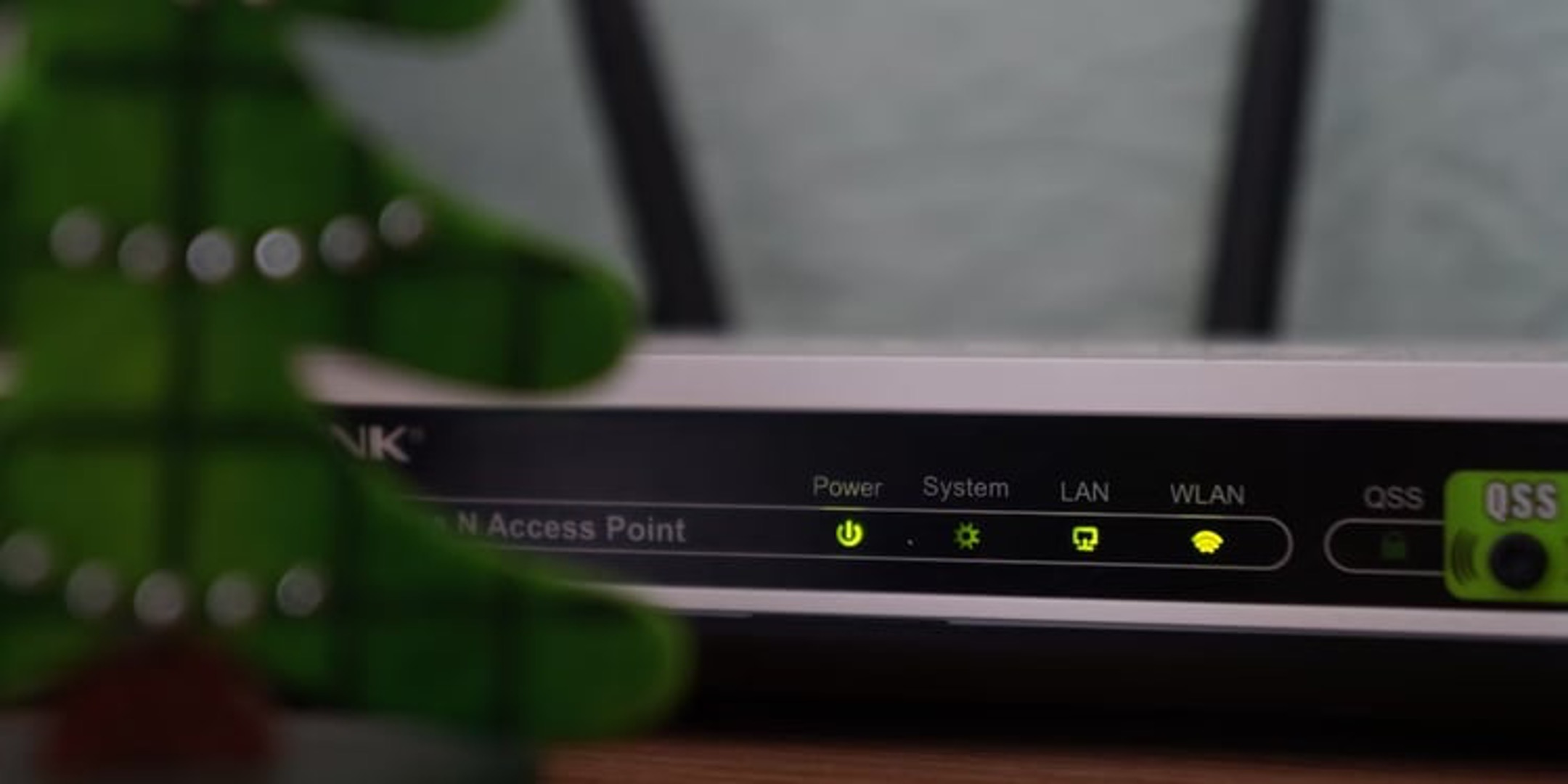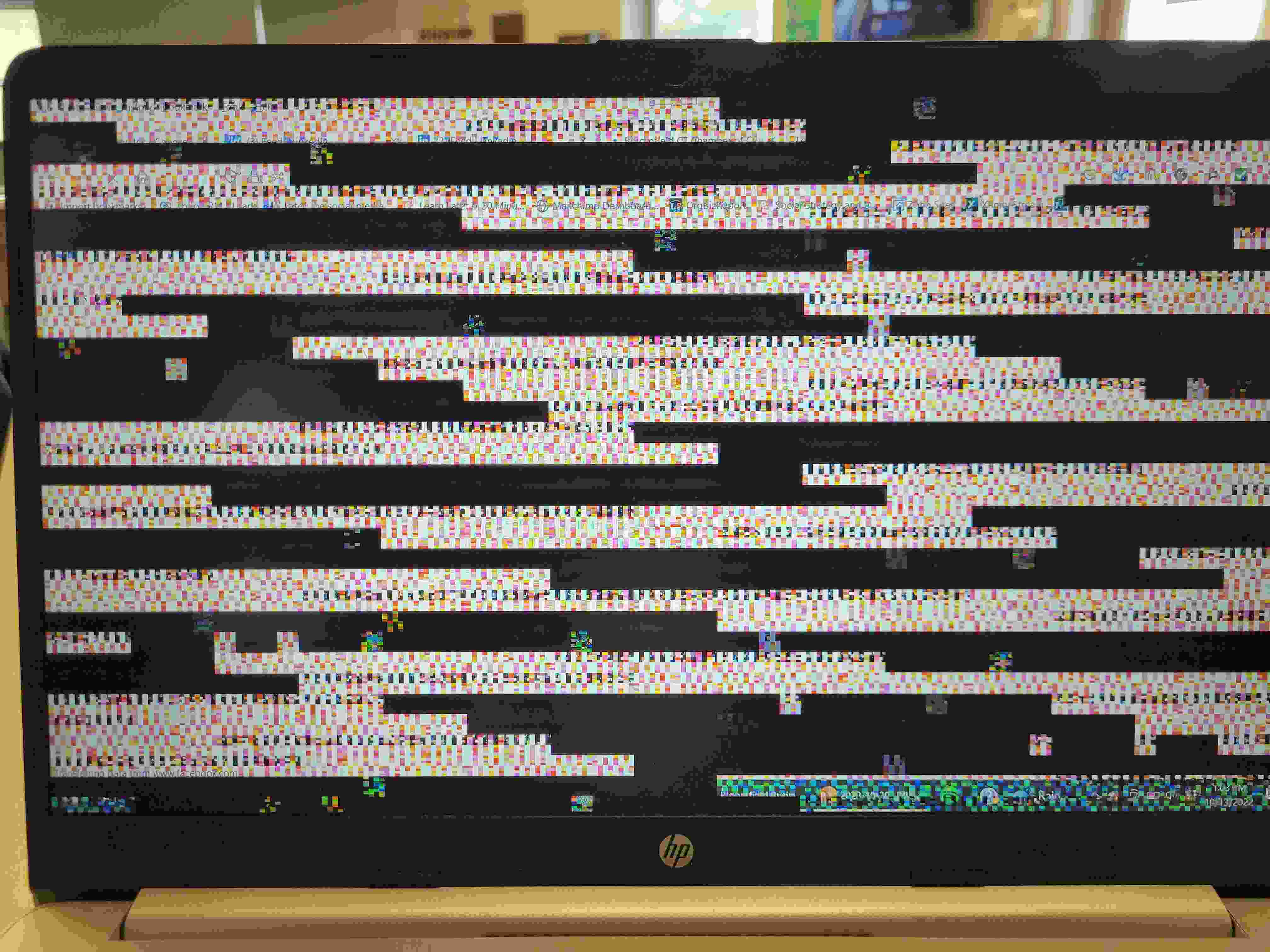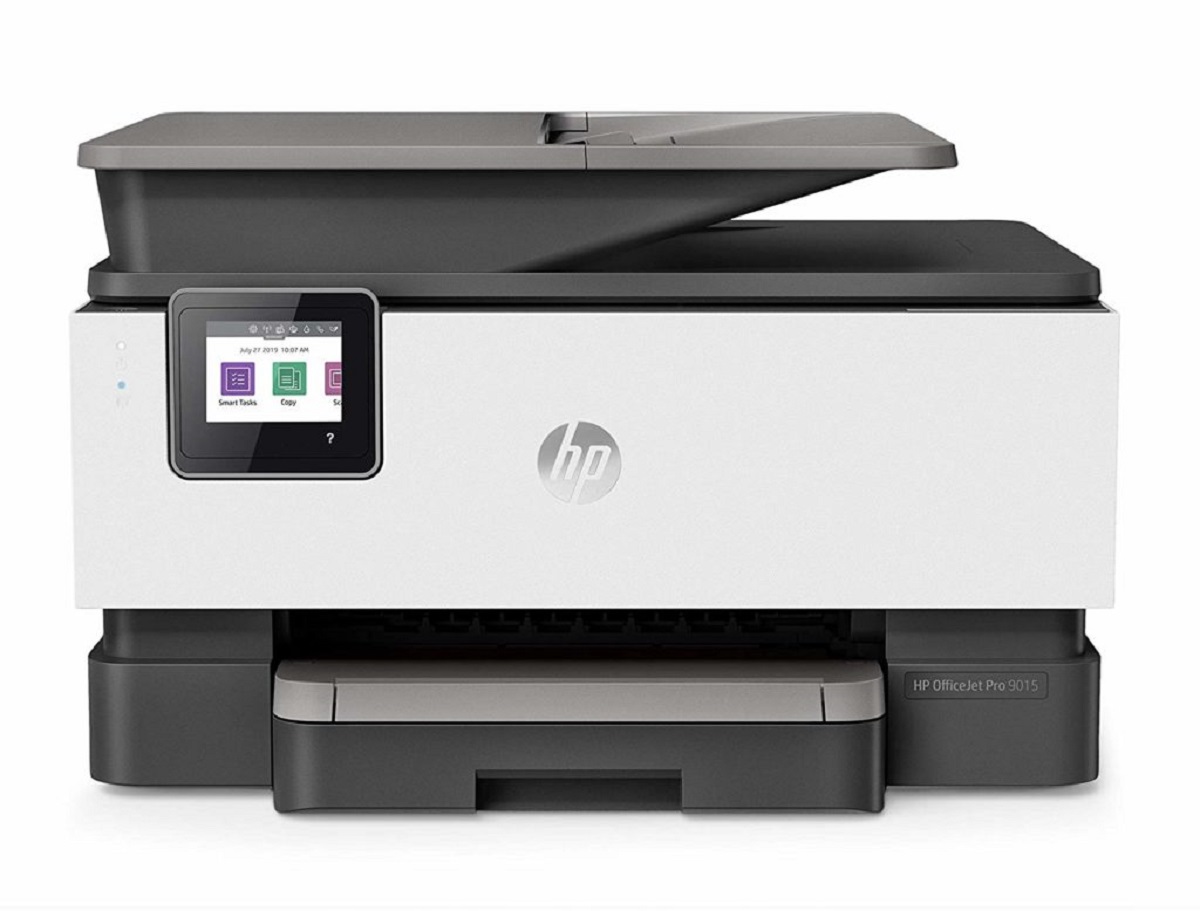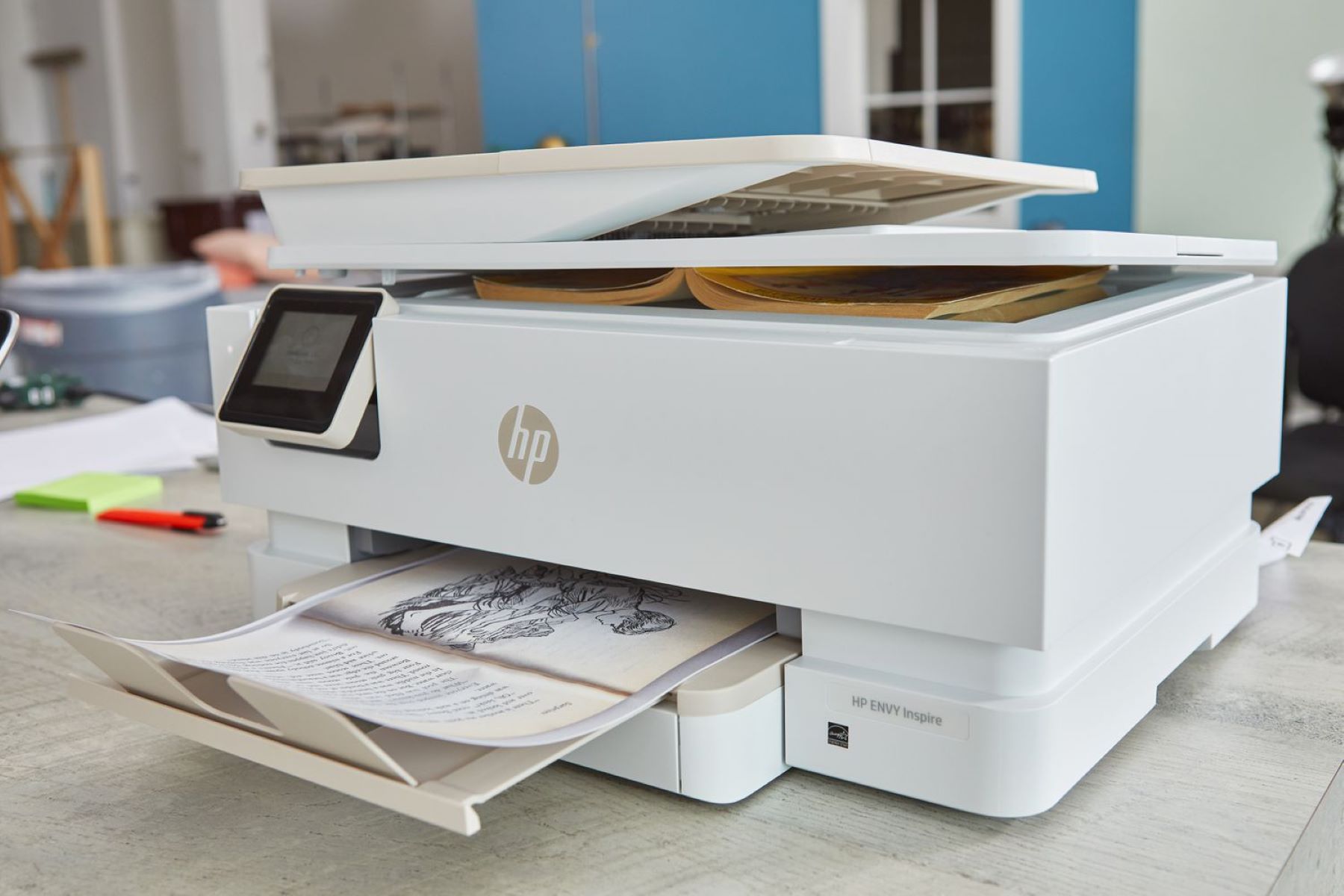Introduction
Printers are essential devices in both home and office settings, simplifying the process of producing physical copies of documents, photos, and more. However, encountering issues with your printer, such as a blinking blue light, can be frustrating and disruptive. The blinking blue light on an HP printer is an indication that there is an underlying problem that needs to be addressed. Understanding the cause of this issue and knowing how to troubleshoot it can save you time and frustration, allowing you to resume your printing tasks with ease.
In this comprehensive guide, we will delve into the common causes of the blinking blue light on HP printers and provide practical troubleshooting steps to resolve this issue. Whether you are a tech-savvy individual or someone who is new to printer maintenance, this article will equip you with the knowledge and confidence to tackle printer issues effectively.
By gaining insights into the potential reasons behind the blinking blue light, you will be better prepared to identify and address the specific issue affecting your HP printer. From examining hardware components to performing software updates, this guide will cover a range of troubleshooting methods to help you regain control over your printing experience.
So, if you've ever been perplexed by the blinking blue light on your HP printer, fret not. By the end of this article, you will be equipped with the expertise to troubleshoot and resolve this issue, ensuring that your printer operates smoothly and efficiently. Let's dive into the world of printer troubleshooting and unravel the mystery behind the blinking blue light on HP printers.
Understanding the Blinking Blue Light
The blinking blue light on an HP printer serves as a visual indicator of a potential issue that requires attention. When this light starts flashing, it is a signal that the printer is experiencing a problem that needs to be addressed. Understanding the significance of this blinking light is crucial for identifying the underlying cause and implementing the appropriate troubleshooting measures.
The blinking blue light typically signifies an error or malfunction within the printer. This could range from hardware issues such as paper jams or low ink levels to software-related problems like outdated firmware. By observing the pattern and frequency of the blinking blue light, users can glean valuable insights into the nature of the issue affecting their HP printer.
In some instances, the blinking blue light may follow a specific pattern, such as a series of short and long flashes, which can serve as a form of error code. Deciphering these patterns can provide valuable clues about the specific problem at hand. For example, a certain number of consecutive flashes might indicate a particular type of error, enabling users to narrow down the potential causes and take targeted action to resolve the issue.
Moreover, understanding the blinking blue light involves recognizing its role as a communication tool between the printer and the user. Rather than being a mere nuisance, the blinking light serves as a means for the printer to convey its status and request assistance. By interpreting this visual cue, users can engage in proactive troubleshooting, addressing the underlying issue before it escalates and disrupts their printing tasks.
In essence, comprehending the significance of the blinking blue light empowers users to take control of the situation, proactively diagnose printer issues, and take the necessary steps to restore the printer to its optimal functionality. With this foundational understanding in place, users can proceed to explore the common causes behind the blinking blue light and embark on a journey of effective printer troubleshooting.
Common Causes of Blinking Blue Light Issues
The blinking blue light on an HP printer can stem from various underlying causes, each requiring distinct troubleshooting approaches. By familiarizing yourself with these common causes, you can swiftly identify and address the specific issue affecting your printer. Here are the key factors that often contribute to the blinking blue light problem:
-
Paper Jams: One of the most prevalent causes of the blinking blue light is a paper jam within the printer. When paper becomes lodged in the printer's mechanisms, it can trigger the blinking blue light as a warning sign. Resolving this issue involves carefully clearing any jammed paper from the printer's input and output trays, as well as the cartridge access area.
-
Low Ink or Toner Levels: Insufficient ink or toner levels can lead to the blinking blue light, indicating that the printer requires attention. When the ink or toner levels are critically low, the printer may pause its operations and signal the need for cartridge replacement. By addressing this issue promptly, users can ensure uninterrupted printing and prevent potential damage to the printer's components.
-
Hardware Malfunctions: Various hardware-related issues, such as a malfunctioning paper feed mechanism or a faulty cartridge, can trigger the blinking blue light. By inspecting the printer's internal components and ensuring that all parts are functioning correctly, users can identify and address hardware-related issues that contribute to the blinking blue light problem.
-
Outdated Firmware: An outdated printer firmware can also manifest as a blinking blue light issue. Firmware serves as the software that controls the printer's operations, and outdated firmware can lead to operational disruptions. Updating the printer's firmware to the latest version can often resolve this issue and prevent future occurrences of the blinking blue light.
-
Network Connectivity Problems: For network-connected printers, issues related to network connectivity, such as Wi-Fi disconnections or configuration errors, can lead to the blinking blue light. Ensuring stable and reliable network connectivity is essential for seamless printer operations and can help eliminate this particular cause of the blinking blue light.
By recognizing these common causes of the blinking blue light on HP printers, users can gain valuable insights into the potential issues affecting their devices. Armed with this knowledge, they can proceed to implement targeted troubleshooting steps to address the specific cause of the blinking blue light, restoring their printers to optimal functionality.
Troubleshooting Steps
When encountering the blinking blue light issue on an HP printer, it's crucial to proceed with systematic troubleshooting steps to identify and address the underlying cause. By following these targeted measures, users can effectively resolve the problem and restore their printer to seamless functionality.
-
Resetting the Printer: A simple yet often effective initial step is to reset the printer. This can be done by powering off the printer, unplugging it from the power source, and waiting for a few minutes before plugging it back in and turning it on. This process can help clear temporary errors and reset the printer's internal mechanisms, potentially resolving the blinking blue light issue.
-
Updating Printer Firmware: Checking and updating the printer's firmware to the latest version is a critical troubleshooting step. This can be accomplished by accessing the printer's settings or utilizing HP's official website to download and install firmware updates. By ensuring that the printer's firmware is up to date, users can address potential software-related issues that contribute to the blinking blue light problem.
-
Checking for Paper Jams: Carefully inspecting the printer for any paper jams is essential. Users should open the printer's input and output trays, as well as the cartridge access area, to remove any jammed paper. Clearing out any obstructions can eliminate the blinking blue light and prevent further disruptions to the printer's operations.
-
Checking for Ink or Toner Cartridge Issues: Verifying the ink or toner cartridge status is crucial for addressing the blinking blue light problem. Users should check the ink or toner levels and replace any depleted cartridges. Additionally, ensuring that the cartridges are correctly installed and free from damage can help resolve this issue.
-
Network Connectivity Troubleshooting: For network-connected printers, troubleshooting network connectivity issues is paramount. Users should verify the printer's connection to the network, address any Wi-Fi or Ethernet connectivity issues, and ensure that the printer is properly configured to communicate with the network.
By methodically implementing these troubleshooting steps, users can systematically address the blinking blue light issue on their HP printers. These measures are designed to target the common causes of the problem, enabling users to identify and resolve the specific issue affecting their printers. Through proactive troubleshooting, users can regain control over their printing experience and ensure that their HP printers operate smoothly and efficiently.
Resetting the Printer
Resetting the printer is a fundamental troubleshooting step that can often resolve the blinking blue light issue on HP printers. This process aims to clear temporary errors and reset the printer's internal mechanisms, potentially restoring its functionality. Here's a detailed exploration of the reset procedure and its significance in addressing printer issues.
When a printer experiences operational disruptions, such as the blinking blue light, performing a reset can serve as an effective initial intervention. To initiate the reset process, start by powering off the printer and ensuring that it is completely disconnected from the power source. This involves unplugging the printer from the power outlet and waiting for a few minutes to allow any residual electrical charge to dissipate.
During this brief waiting period, the printer's internal components undergo a complete power cycle, effectively resetting their state. This can help clear temporary errors or inconsistencies that may have triggered the blinking blue light. Additionally, the reset process provides the printer with a fresh start, allowing it to recalibrate its internal mechanisms and potentially resolve the underlying issue.
After the waiting period, reconnect the printer to the power source and turn it on. This simple yet crucial step completes the reset process, allowing the printer to boot up and resume its operations. As the printer powers on, observe its status to determine if the blinking blue light persists or if it has been successfully resolved.
The significance of resetting the printer lies in its ability to address transient errors and irregularities that may have disrupted the printer's normal functioning. By performing a reset, users can effectively clear the slate and provide the printer with an opportunity to rectify any internal issues that led to the blinking blue light.
It's important to note that while a printer reset can often resolve the blinking blue light issue, persistent or recurring problems may warrant further investigation and troubleshooting. In such cases, users can explore additional measures, such as updating the printer's firmware or inspecting for hardware-related issues, to comprehensively address the underlying cause.
In essence, resetting the printer serves as a foundational troubleshooting step that can potentially alleviate the blinking blue light issue and restore the printer to seamless functionality. By incorporating this proactive measure into their troubleshooting process, users can expedite the resolution of printer issues and ensure consistent performance from their HP printers.
Updating Printer Firmware
Updating the firmware of an HP printer is a critical troubleshooting step that can effectively address the blinking blue light issue and enhance the overall performance and reliability of the printer. Firmware serves as the software that governs the printer's operations, controlling various functions and ensuring seamless communication between the printer and external devices. By keeping the printer's firmware up to date, users can mitigate potential software-related issues that contribute to the blinking blue light problem.
The process of updating the printer's firmware typically involves accessing the printer's settings or utilizing the official HP website to obtain the latest firmware updates. HP provides a user-friendly platform for downloading firmware updates, ensuring that users can easily access and install the latest software enhancements for their printers. Upon accessing the HP support website, users can navigate to the firmware section and identify the specific firmware update applicable to their printer model.
Once the appropriate firmware update is identified, users can proceed to download the update file and follow the provided instructions to install it on their printer. The installation process may vary depending on the printer model and the update method, but it generally involves transferring the firmware update file to the printer and initiating the update process through the printer's interface.
Updating the printer's firmware offers several significant benefits beyond addressing the blinking blue light issue. It can introduce performance optimizations, security enhancements, and compatibility improvements, ensuring that the printer operates at its best. Additionally, firmware updates often include bug fixes and error resolutions, effectively targeting the underlying causes of the blinking blue light and preventing its recurrence.
By proactively updating the printer's firmware, users can bolster the printer's stability and resilience, minimizing the likelihood of encountering disruptive issues such as the blinking blue light. Furthermore, staying current with firmware updates aligns with best practices for maintaining the health and functionality of electronic devices, ensuring that the printer remains equipped with the latest software advancements and optimizations.
In essence, updating the printer's firmware is a proactive and impactful troubleshooting measure that not only addresses the blinking blue light issue but also fortifies the printer's overall performance and reliability. By incorporating regular firmware updates into their printer maintenance routine, users can optimize the functionality of their HP printers and minimize the impact of potential software-related issues, fostering a seamless and efficient printing experience.
Checking for Paper Jams
Checking for paper jams is a crucial step in troubleshooting the blinking blue light issue on HP printers. Paper jams are a common occurrence that can disrupt the printer's operations and trigger the blinking blue light as a warning sign. By meticulously inspecting the printer for any paper obstructions, users can effectively address this prevalent issue and restore the printer to seamless functionality.
To begin the process of checking for paper jams, users should start by powering off the printer and unplugging it from the power source to ensure safety and prevent any potential mishaps during the inspection. Once the printer is safely disconnected, users can proceed to open the input and output trays, as well as the cartridge access area, to thoroughly examine the internal components for any trapped paper.
During the inspection, users should pay close attention to any visible paper fragments, curled edges, or crumpled sheets that may indicate a paper jam. Additionally, gently removing the printer's cartridges and inspecting the cartridge access area can provide a comprehensive view of the internal mechanisms and reveal any hidden paper jams that may be contributing to the blinking blue light issue.
In the event that a paper jam is identified, users should exercise caution and delicately remove the jammed paper to prevent tearing or damaging the internal components. Utilizing the designated levers or release tabs, users can carefully clear the paper jam from the affected areas, ensuring that no residual fragments remain to impede the printer's functionality.
Once the paper jam has been successfully cleared, users can proceed to reassemble the printer by reinserting the cartridges and closing the input and output trays securely. After ensuring that all components are properly reinstalled, users can power on the printer and observe its status to confirm whether the blinking blue light has been resolved.
By diligently checking for paper jams and addressing any identified obstructions, users can eliminate a common cause of the blinking blue light issue and promote uninterrupted printing operations. This proactive troubleshooting step empowers users to maintain the optimal functionality of their HP printers and mitigate the impact of paper-related disruptions, fostering a seamless and efficient printing experience.
Checking for Ink or Toner Cartridge Issues
Verifying the status of the ink or toner cartridges is a pivotal step in troubleshooting the blinking blue light issue on HP printers. Ink and toner cartridges play a fundamental role in the printing process, and issues related to their levels or functionality can contribute to the blinking blue light problem. By meticulously examining the ink or toner cartridges and addressing any identified issues, users can effectively resolve this common cause of printer disruptions.
To commence the inspection for ink or toner cartridge issues, users should initiate the process by accessing the printer's cartridge compartment. Depending on the printer model, this may involve opening a designated cartridge access panel or lifting the printer's top cover to gain access to the cartridges. Once the cartridge compartment is accessible, users can proceed to visually inspect the ink or toner cartridges for any signs of depletion, damage, or misalignment.
A primary consideration during the inspection involves checking the ink or toner levels within the cartridges. Many modern HP printers are equipped with ink or toner level indicators, allowing users to assess the remaining supply of printing consumables. If the ink or toner levels are critically low, the printer may trigger the blinking blue light to alert users to the need for cartridge replacement. In such cases, promptly replacing the depleted cartridges with new ones can effectively address this issue and restore the printer to seamless functionality.
In addition to verifying the ink or toner levels, users should ensure that the cartridges are correctly installed and securely seated within the cartridge compartment. Misaligned or improperly installed cartridges can impede the printer's operations and lead to the blinking blue light problem. By carefully reseating the cartridges and confirming their proper alignment, users can mitigate potential cartridge-related issues and promote consistent printing performance.
Furthermore, inspecting the cartridges for any physical damage, such as leaks, cracks, or clogged nozzles, is crucial for identifying potential cartridge issues. Damaged cartridges can compromise the printing process and trigger error conditions, including the blinking blue light. If any damage is detected, replacing the affected cartridges with new, undamaged units can effectively resolve this issue and restore the printer to optimal functionality.
By meticulously checking for ink or toner cartridge issues and addressing any identified concerns, users can eliminate a prevalent cause of the blinking blue light problem and ensure uninterrupted printing operations. This proactive troubleshooting step empowers users to maintain the optimal functionality of their HP printers and mitigate the impact of cartridge-related disruptions, fostering a seamless and efficient printing experience.
Conclusion
In conclusion, navigating the realm of printer troubleshooting, particularly the blinking blue light issue on HP printers, necessitates a blend of technical insight and practical intervention. By unraveling the mystery behind the blinking blue light and understanding its significance as a communication tool between the printer and the user, individuals can approach printer issues with confidence and efficacy.
The common causes of the blinking blue light, ranging from paper jams and low ink levels to hardware malfunctions and outdated firmware, provide valuable insights into the potential disruptions that can affect HP printers. Armed with this knowledge, users can embark on a journey of targeted troubleshooting, addressing the specific cause of the blinking blue light to restore their printers to seamless functionality.
From the fundamental steps of resetting the printer and updating its firmware to the meticulous processes of checking for paper jams and inspecting ink or toner cartridges, users are equipped with a comprehensive toolkit for addressing the blinking blue light issue. These troubleshooting measures not only alleviate the immediate problem but also contribute to the overall maintenance and optimization of HP printers, ensuring consistent performance and reliability.
Furthermore, the proactive nature of these troubleshooting steps empowers users to take control of their printing experience, fostering a sense of independence and proficiency in addressing printer issues. By embracing a systematic approach to troubleshooting and maintenance, individuals can minimize disruptions, optimize printer performance, and elevate their overall printing experience.
Ultimately, the journey of resolving the blinking blue light issue on HP printers transcends mere technical intervention; it embodies a proactive mindset and a commitment to maintaining the seamless functionality of essential devices. Through a blend of understanding, intervention, and perseverance, users can conquer the blinking blue light and emerge with a newfound sense of mastery over their printing endeavors.
As users apply these insights and troubleshooting methods, they are poised to navigate the realm of printer maintenance with confidence, ensuring that their HP printers operate smoothly and efficiently, free from the enigmatic glow of the blinking blue light.







